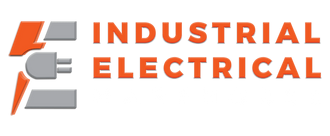Auxiliary contact blocks are integral components in industrial electrical systems, often underestimated but critical for advanced control and signaling functions. Whether you are an electrical technician, automation engineer, or plant maintenance manager, understanding how an auxiliary contact block functions can help you design more efficient, responsive, and safer control circuits. In this article, we explore the various uses of auxiliary contact blocks, explain how they work, and demonstrate how they enable more complex signaling in control circuits.
What Is an Auxiliary Contact Block?
An auxiliary contact block is a supplementary contact unit mounted on a primary device like a contactor, circuit breaker, or motor starter. Unlike the main contacts that control the power supply to motors or machinery, the auxiliary contacts are designed for control and signaling purposes. These contacts operate in tandem with the main device but do not carry the primary load current.
There are two types of auxiliary contacts:
- Normally Open (NO): Opens the circuit when the device is de-energized and closes it when energized.
- Normally Closed (NC): Closes the circuit when the device is de-energized and opens it when energized.
These variations allow for flexible configurations in automation systems.
How Auxiliary Contact Blocks Work
The working principle of an auxiliary contact block is straightforward yet vital. When the main device (e.g., contactor) is activated, the auxiliary contact changes its state. This change can be used to:
- Signal the status of the main device to a control panel
- Initiate or stop other operations in a sequence
- Trigger alarms or indicators
- Provide interlocks for safety mechanisms
Because of these functions, the auxiliary contact block becomes essential for building logical operations in control circuits.
Key Uses of Auxiliary Contact Blocks
1. Status Indication
One of the most common uses of auxiliary contact blocks is to indicate the status of a primary device. For example, when a motor starter is energized, the NO auxiliary contact closes and sends a signal to an indicator light or PLC input.
2. Interlocking
Interlocking prevents two devices from operating simultaneously when it could be unsafe or inefficient. By using NC auxiliary contacts, one contactor can disable another, ensuring that operations happen only under predefined safe conditions.
3. Alarm Signaling
Auxiliary contacts can activate alarms or buzzers to indicate abnormal conditions, such as overloads or fault states. This quick notification system enhances operator awareness and reduces response time.
4. Sequence Control
In complex automation systems, certain processes must occur in a specific order. Auxiliary contact blocks help enforce these sequences. For example, one motor must run before another can start, and this logic is implemented through interlinked auxiliary contacts.
5. Electrical Interlocks in Manual and Auto Modes
Auxiliary contacts allow toggling between manual and automatic modes in control panels. This flexibility is crucial in systems where human intervention may occasionally override automation.
Advantages of Using Auxiliary Contact Blocks
- Compact Design: Auxiliary blocks add minimal space to the main device while enhancing its capability.
- Ease of Installation: Most blocks snap on or screw into standard slots in contactors and circuit breakers.
- Improved System Feedback: They offer real-time insights into equipment status.
- Enhanced Safety: By enabling interlocks and alarms, they reduce operational hazards.
- Flexible Configuration: With combinations of NO and NC contacts, custom control logic becomes feasible.
Applications Across Industries
Auxiliary contact blocks are widely used across various sectors:
- Manufacturing: In conveyor systems, CNC machines, and robotic arms for sequence control and fault indication.
- Utilities: For monitoring and controlling switchgear and transformer protection.
- HVAC Systems: Used in automatic switching and feedback signaling in chillers and air handling units.
- Building Automation: Integrated into lighting and elevator control panels.
Choosing the Right Auxiliary Contact Block
When selecting an auxiliary contact block, consider the following factors:
- Voltage Rating: Ensure compatibility with your control circuit’s voltage.
- Current Rating: While they handle small currents, it’s important to verify limits.
- Contact Configuration: Choose the right NO/NC combination.
- Mounting Type: Side-mounted or front-mounted, depending on your hardware.
- Environmental Ratings: IP ratings for dust and water resistance if operating in harsh environments.
Wiring and Installation Best Practices
Proper wiring and installation are crucial for the reliable operation of auxiliary contact blocks:
- Always follow the manufacturer's wiring diagram.
- Use ferrules for better contact and vibration resistance.
- Ensure tight connections to avoid contact chattering.
- Periodically inspect for wear and tear, especially in high-cycle environments.
Integrating Auxiliary Contacts into Smart Control Systems
With the rise of smart manufacturing and IIoT, auxiliary contact blocks now play a role in digital communication. While they are fundamentally mechanical, they interface with smart relays and PLCs to share status updates, provide redundancy, and increase diagnostic capability.
Common Misconceptions
Misconception 1: They Can Replace Main Contacts
Auxiliary contact blocks are not designed to carry load currents. Using them in place of main contacts will lead to failure.
Misconception 2: They Are Only for Status Indication
While status indication is a major use, auxiliary contacts support complex automation logic, safety interlocks, and diagnostics.
Misconception 3: All Auxiliary Contacts Are the Same
Different applications require specific configurations, contact materials, and response speeds. Selection should be tailored.
Troubleshooting Auxiliary Contact Blocks
Common issues include:
- Contact Bounce: Caused by loose wiring or worn contacts
- Signal Loss: Due to corrosion or dust accumulation
- Miswiring: Always double-check diagrams during maintenance
Maintaining a proper preventive maintenance schedule ensures longevity.
Conclusion: Elevate Your Control Systems with Auxiliary Contact Blocks
The auxiliary contact block is a small but powerful component that adds intelligence, safety, and control flexibility to industrial electrical systems. By understanding its capabilities and correctly integrating it into your circuits, you can build smarter and more responsive automation networks.
Explore related product collections on our website to find reliable and industrial-grade components:
Empower your industrial automation today with the right auxiliary contact blocks from Industrial Electrical Warehouse.


